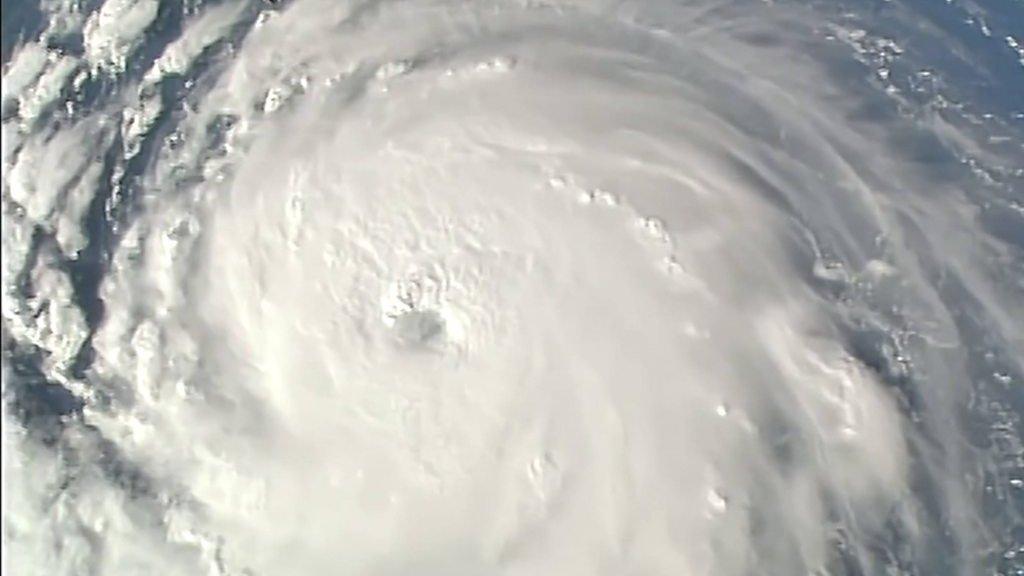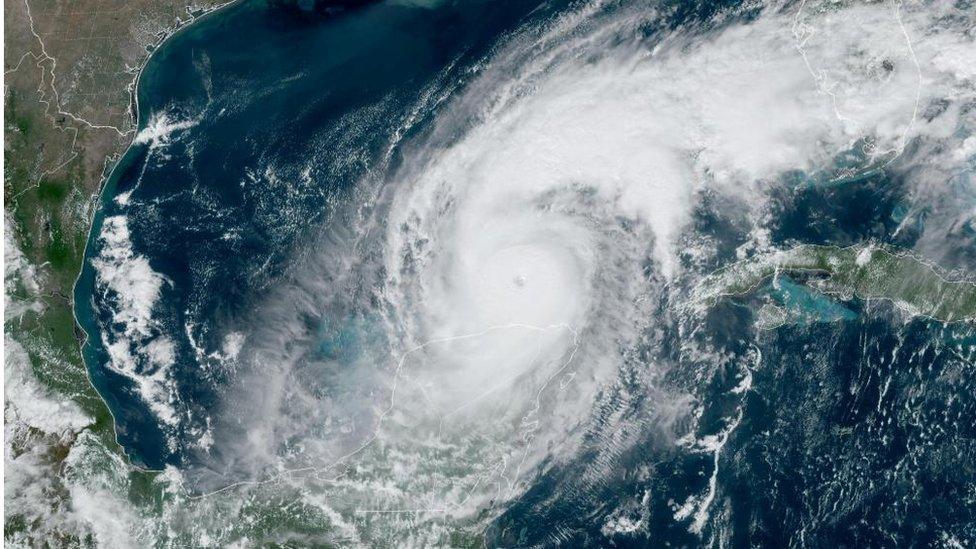Hurricane Florence: Your guide to the story
- Published

You may have heard about Hurricane Florence, the storm careering towards the US east coast prompting warnings of an impending disaster.
But what makes Florence so different from other storms this year? From Beryl, Chris, and Debby?
We've pulled together some of the key elements that explain why officials are so worried, and what damage Florence could cause.
One video to watch
The storm's winds may have weakened in recent days - they are now at 110mph (175km/h) - but there are fears Florence's slow-moving nature could bring different problems.
Forecasters say it could slow dramatically when it nears land and then linger until Saturday, moving unpredictably along the coast and bringing torrential rain.
Up to 1.7 million people have been ordered to evacuate across South Carolina, North Carolina and Virginia. A further 10 million people are now under some form of storm watch.
So how are these people preparing? We spoke to those braced for Florence's looming arrival.
People have left homes and taken precautions ahead of the hurricane
One striking picture
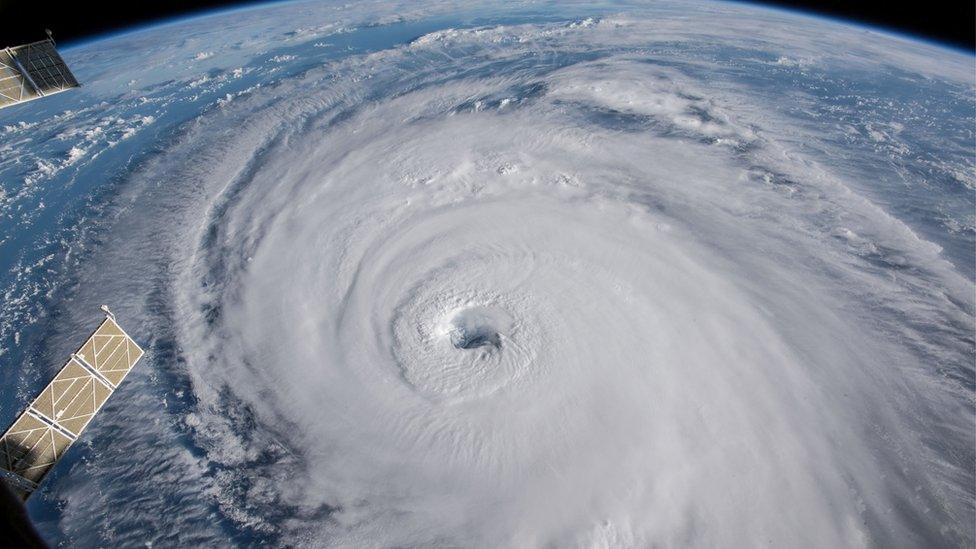
Hurricane Florence seen off the US east coast in the Atlantic Ocean
This satellite image of Florence hurtling towards the east coast on Wednesday gives a sense of its massive scale.
A National Weather Service forecaster has said it will be the "storm of a lifetime" for parts of the Carolina coast. One emergency official said it will be a "Mike Tyson punch" to the area.
There will be hurricane-force winds up to 80 miles from the centre of the storm, meteorologists say.
Some forecasters have predicted it could be the most powerful storm ever to hit the region.
One big number
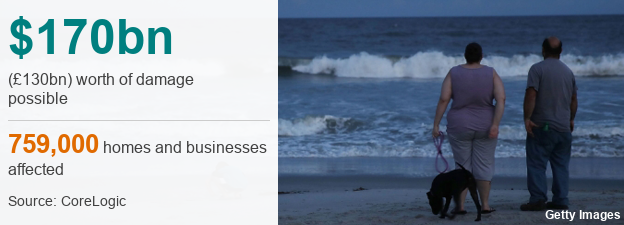
Florence could do more than $170bn (£130bn) of damage and affect nearly 759,000 homes and businesses, says analytics firm CoreLogic.
Energy companies have also warned that the storm could knock out power for the foreseeable future in some areas.
"This is no ordinary storm, and people could be without power for a very long time - not days but weeks," a president of one energy company in North Carolina said on Wednesday.
Allow X content?
This article contains content provided by X. We ask for your permission before anything is loaded, as they may be using cookies and other technologies. You may want to read X’s cookie policy, external and privacy policy, external before accepting. To view this content choose ‘accept and continue’.

One bit of context
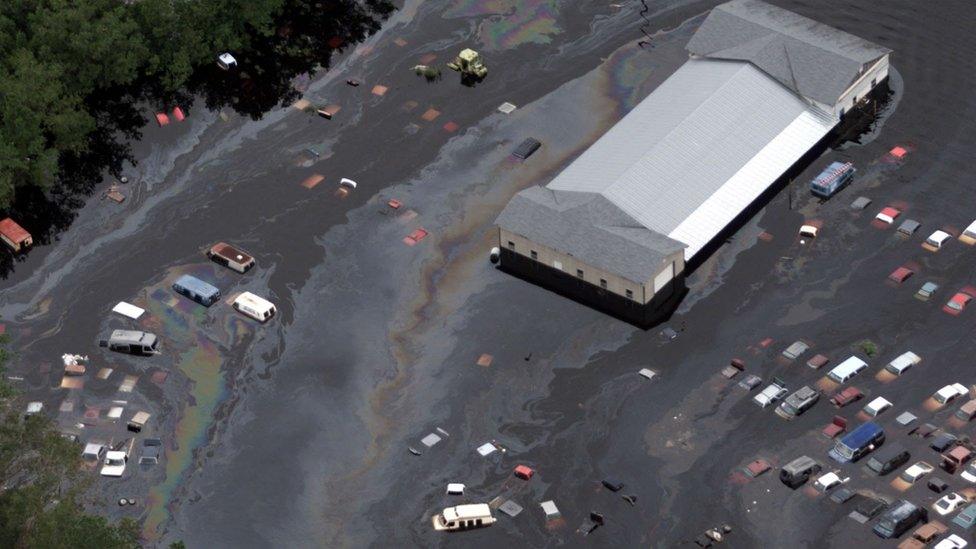
Hurricane Floyd hit North Carolina in 1999 and left floodwaters that were heavily polluted by agricultural waste
If the storm lingers for a few days, the sheer amount of rainfall could lead to catastrophic flooding.
But the biggest danger could be life-threatening storm surges. These could be as high as 13ft (4m) along parts of the North Carolina coast.
All of this has led to fears that the state could face an environmental disaster if industrial waste - including hog manure and coal ash - is washed into people's homes.
North Carolina has had this problem before. In 1999, Hurricane Floyd barrelled into the region and flooded vast areas with toxic water.
Dead hogs and chickens were pictured floating in the floodwaters, which had been polluted with agricultural waste and petrol.
One quote that tells a story
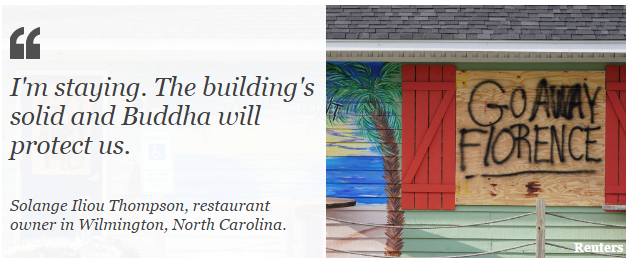
Many people in coastal communities have followed the mandatory evacuation orders, but some are vowing to stay put and ride it out.
Solange Iliou Thompson, a restaurant owner in the town of Wilmington, North Carolina, made her stance clear.
"I'm staying. The building's solid and Buddha will protect us," she told AFP news agency. "What can you do? You can't stop Mother Nature."
A delicatessen owner in the same town told Reuters that he was also going to stay.
"I'm not approaching Florence from fear or panic," he said. "It's going to happen. We just need to figure out how to make it through."
Why do people ignore hurricane warnings?
- Published12 September 2018
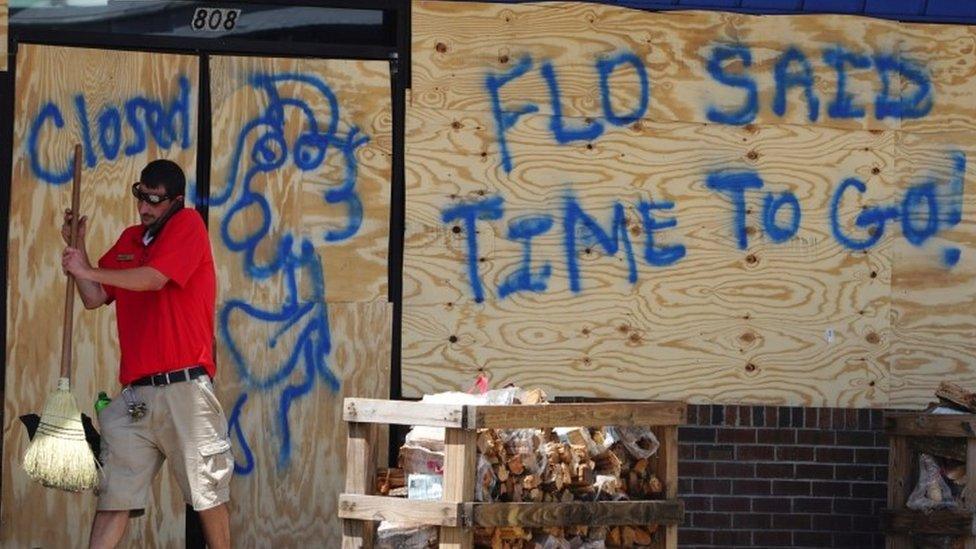
- Attribution
- Published12 September 2018
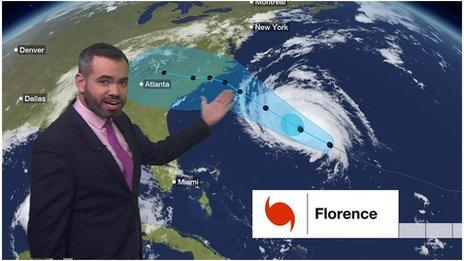
- Published12 September 2018
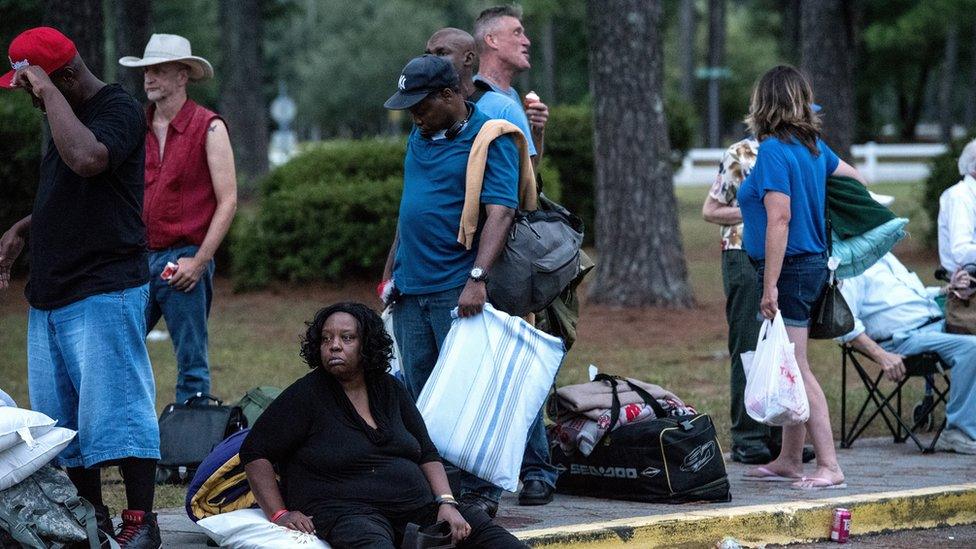
- Published11 September 2018
